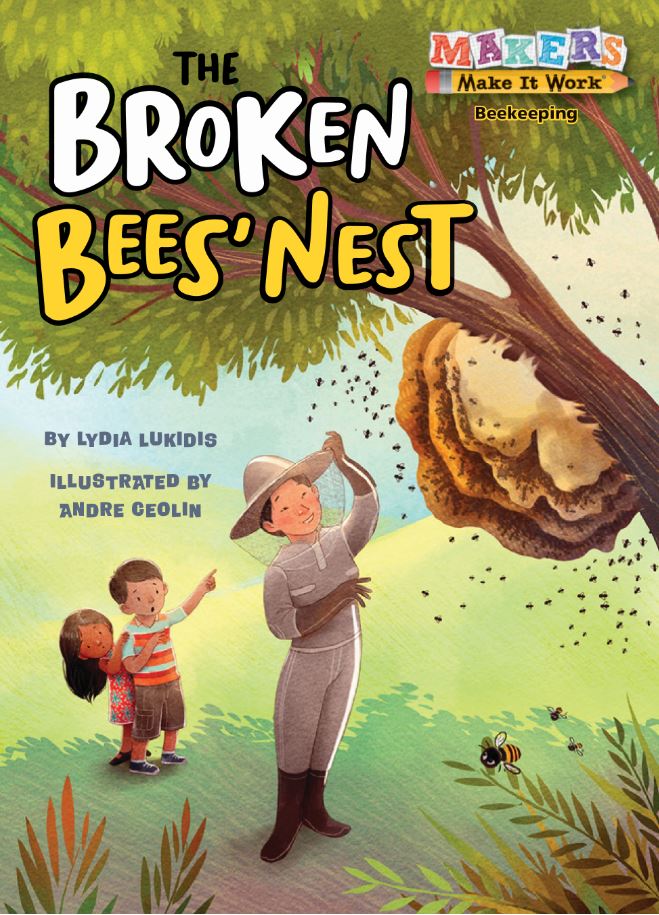 Welcome to Cantastic Authorpalooza, featuring posts by and about great Canadian children’s writers! Today’s guest: Lydia Lukidis. Take it away, Lydia!
Welcome to Cantastic Authorpalooza, featuring posts by and about great Canadian children’s writers! Today’s guest: Lydia Lukidis. Take it away, Lydia!
Once upon a time, I had a dream: I wanted to write nonfiction. Keep in mind, this was many years ago, and I came from a poetry and fiction background. I had been writing poetry since I was six, and also composed fictional stories. When I began my journey in the world of kidlit, I always assumed I would write fiction.
And I do. But in between the industry research, numerous webinars and the reading I was doing, the world of nonfiction began to call to me. I loved reading it and reading about it, so it only seemed logical that I should write it. Once I did, I immediately fell in love. Though, I admit I made some rookie mistakes along the way, so I’m writing this article to help steer other aspiring nonfiction lovers in the right direction.
My first mistake? Not including a bibliography! Oops. I wrote a slew of short stories and sent them to magazines such as Highlights. One editor responded immediately, and notified me she wouldn’t even read my article because I didn’t supply a bibliography. I felt embarrassed, but it was a pivotal learning moment.
You better believe the next articles I wrote contained bibliographies. I’ve been told that some editors flip to it BEFORE even reading your work. But, I made another fatal mistake: my references were not reliable and I had too many secondary sources. At the time, I had no idea what a primary or secondary resource was. In the words of author Susan Hughes:
A primary source provides direct firsthand evidence about the subject, so, for example, if you’re looking for historical information, a letter or photo or eyewitness account or a legal document would be primary sources.
A secondary source discusses or analyzes or comments on primary sources, so, for example, an article in a scholarly journal discussing someone else’s research or a book.
What I learned is this: you can’t just surf the web for a few hours and complete your research. You have to dig deeper, become a quasi-detective, and track down reliable sources. Here’s a short list of research tactics I find useful:
Find experts!
You’re likely not an expert on your topic, so it’s imperative that you find someone who is. Start with online interviews with experts and try to track down their emails. Searching university databases is effective, or use Profnet. In my experience, most experts are more than willing to speak with you. But it’s critical to come to these interviews prepared- don’t ask basic questions. Respect their time and write down a list of focused and specific questions only they can answer. For my STEM book THE BROKEN BEES’ NEST, I interviewed the head of a bee conservation organization, and she helped fact checked the text.
The library is your best friend!
You’ll be spending a lot of time here. Grab every book you can on your topic, and then choose a couch and get comfortable. Look through all the books, take notes, and borrow some to continue your research at home. A tip: don’t bother with books in the juvenile section because the information is too generalized. Find books targeted for adults, and bonus points if experts in the field wrote them.
 Universities & specialized libraries are also your best friend!
Universities & specialized libraries are also your best friend!
Universities often have a multitude of references that libraries don’t, so don’t be shy to check them out. Specialized libraries also open the door to rare texts. In addition, look up journals, periodicals, newspaper, and magazine articles. You can also purchase a membership to online resources such as https://www.newspapers.com/ and literally fall down the rabbit hole of nonfiction research heaven.
Government agencies = a goldmine!
Government agencies and departments also post a wealth of information and facts, free of charge. Here are a few examples that have come in handy with my own research:
https://oceanexplorer.noaa.gov/welcome.html
The internet has a million resources!
There are many other useful online resources. Here are a few I often use:
Internet Archive: https://archive.org/
Project Gutenberg: https://www.gutenberg.org/
Library of congress: https://www.loc.gov/
Smithsonian Libraries: https://library.si.edu/
LSU Library: https://www.lib.lsu.edu/
JSTOR online database: https://about.jstor.org/
Google Scholar: https://scholar.google.com/
Pro Quest: https://www.proquest.com/
EBSCO: https://www.ebsco.com/
Online encyclopedias like Britannica: https://www.britannica.com/
The best part is, all these resources are free! But you’ll need to devote a lot of time to your craft, as you might not necessarily know what you’re looking for until you find it. But when you do, that’s when the magic happens. You’ll be able to formulate a unique hook that will set your book apart from others. Good luck to all you aspiring nonfiction writers!
About the Author
Lydia Lukidis is a children’s author with a multi-disciplinary background that spans the fields of literature, science and puppetry. So far, she has 40 books and eBooks published, as well as over 30 educational books. Her latest STEM book The Broken Bees’ Nest was nominated for a CYBILS Award. Lydia is also passionate about spreading the love of literacy and has been giving writing workshops in elementary schools across Quebec since 1999.
Thanks for having me, Lindsey!!
My pleasure! I learned a few things from this post, too. 😀